Flying with a service dog isn’t just about booking a ticket and boarding a plane. From navigating airports to understanding airline policies, there’s a lot to consider. I’ve travelled on over 14 flights with my guide dog, Miss Molly, and I’ve picked up some crucial tips along the way. Here’s everything you need to know to make your journey as smooth as possible.
Arriving at the airport with a service dog: what to know
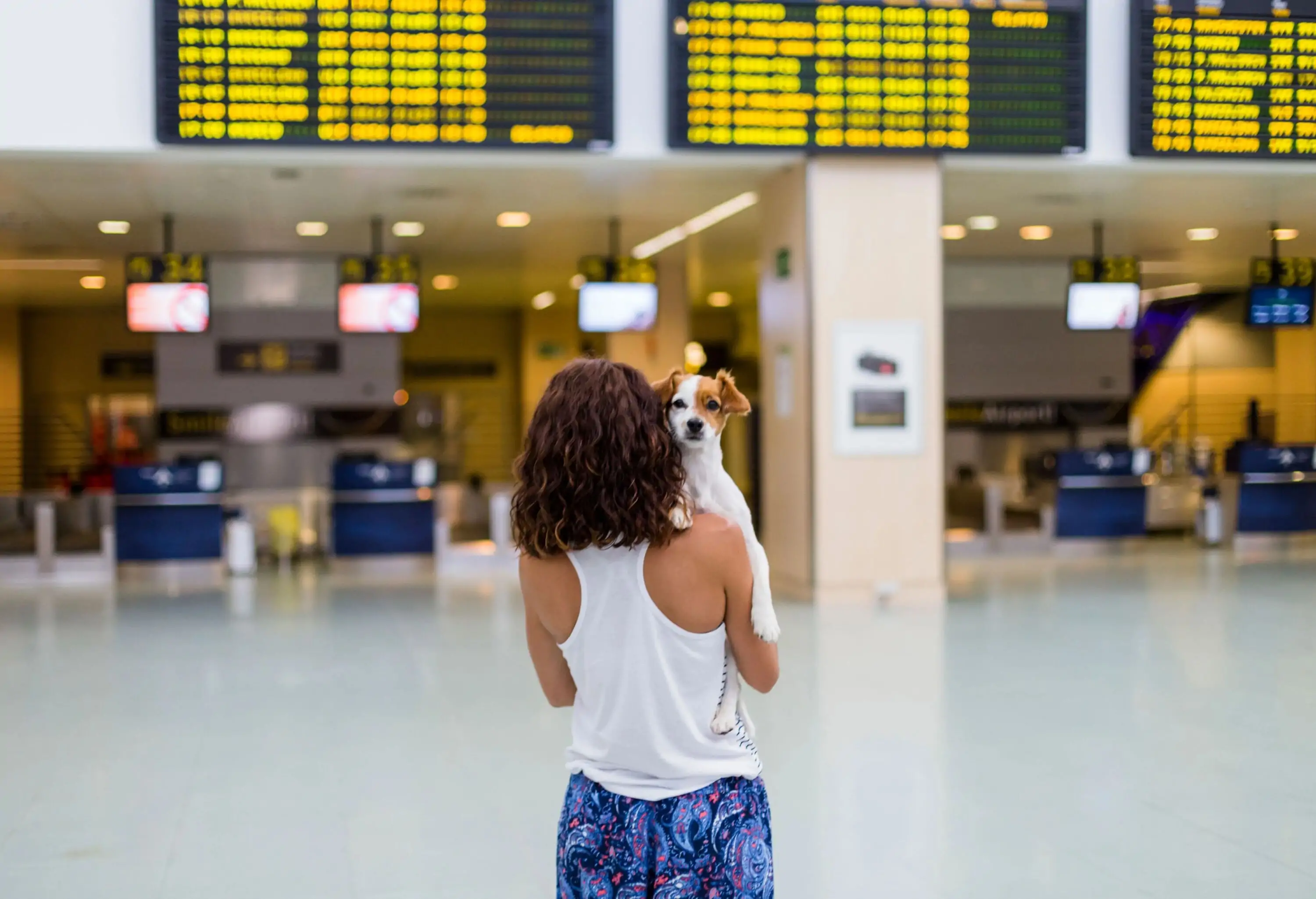
The airport can be overwhelming for both you and your service dog, so preparation is key. Here’s what to keep in mind:
Notify your airline
Always notify your airline at least 48 hours before your flight that you’re travelling with a service dog. Ideally the sooner you let them know, the better. However, there have been times when I’ve shown up to a flight with Molly and told the airline well over 48 hours in advance about her arrival and they haven’t allocated her a seat.
Communicate with the airport
As soon as you’ve booked with the airline, some airports require that you inform their Animal Reception Centre. I always fly from Heathrow and this is a policy they have. They like to know about outbound and inbound flights and a representative may meet you to verify your dog’s documentation and microchip.
Arrive early at the airport
Arrive early because, in my experience, you can’t check in in advance – As soon as I list that I have a service dog on my booking, the ability to check in online disappears because a staff member, at the airport, has to check Molly is the weight I said she was on the booking.
Get support for security screening
Find the assistance desk then you can get support going through security and even go through the sunflower lanyard line.
The lack of spending areas
Many UK airports lack designated spending areas for service dogs. Heathrow has recently added one, but it’s not common elsewhere. Be prepared for your dog to hold it until you reach a suitable space. This is often the tarmac just before boarding and it’s very loud.
Keep your dog’s documentation on hand and updated
While the UK doesn’t require official proof for guide dogs, other countries may ask for vaccination records or an Animal Health Certificate (AHC) such as France.
Before travelling, have your documentation ready and know the requirements for travel. E.g. on Miss Molly’s AHC she needs to have a valid Rabies vaccination within the last three years, tapeworm treatment administered by a vet within 5 days of travel and if she’s not back within 5 days on the treatment we have to renew the AHC which means finding a vet in the country you’re in. Check out my article on service dogs in hotels for more tips.
How to handle security screening with a service dog
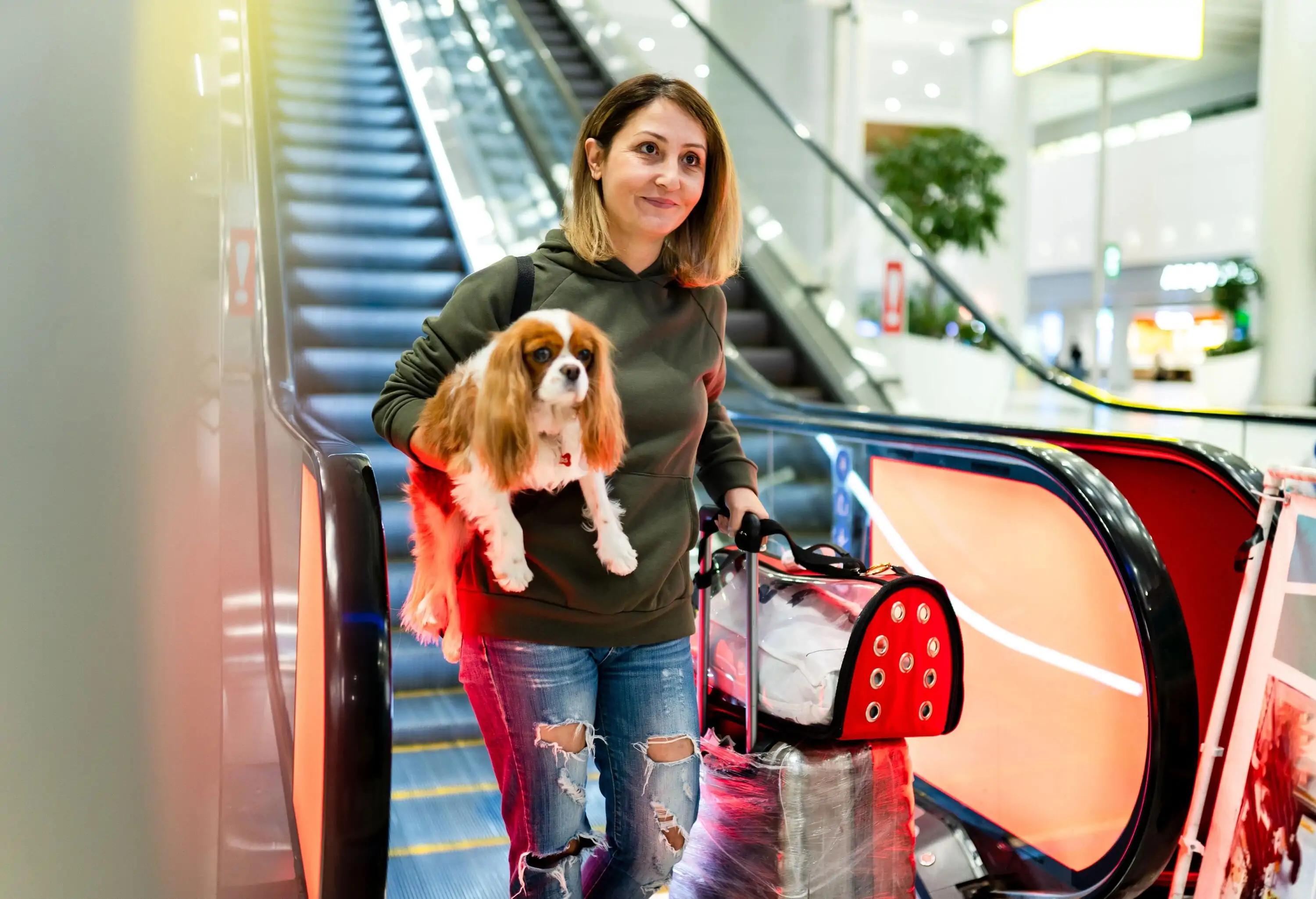
Going through security with a service dog can be unpredictable, and I often find staff unsure of what to do. In most UK airports, your dog will walk through the metal detector with their harness on. Staff may swab the harness for explosives. You’ll go through it separately and then be reunited with your dog immediately after.
Molly wasn’t sure about this process at first, but now she just wags her tail at security staff. If your dog is new to flying, ask your guide dog instructor about a test flight to get them used to the process.
How much does it cost to fly with a service dog?
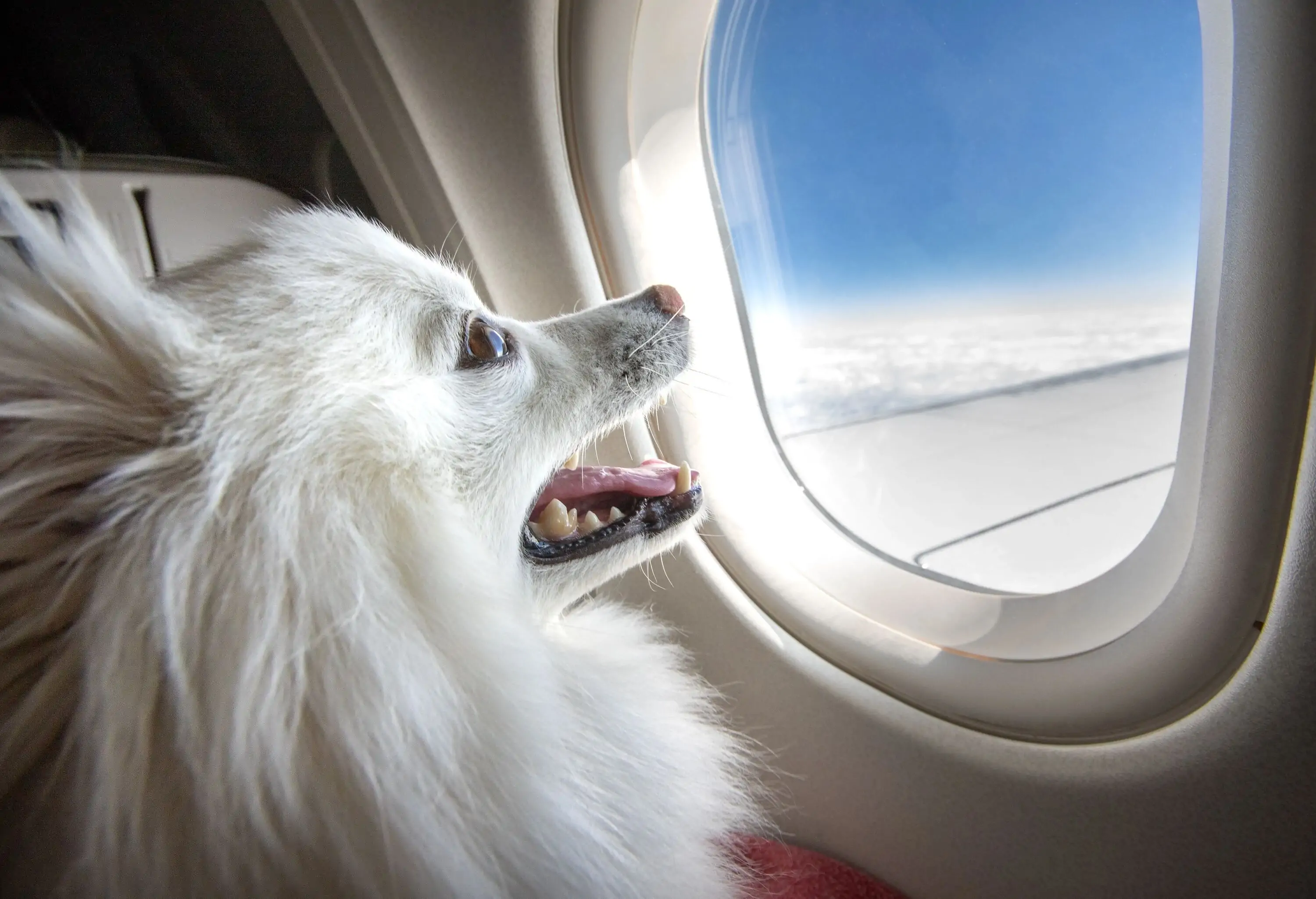
In the UK, airlines cannot charge a fee for a service dog. However, some airlines may ask you to sign a liability waiver stating that you’re responsible for any damages caused by your dog. Though so far I’ve never had to sign one.
Be mindful of added costs, such as an AHC if you’re flying internationally, extra luggage fees if you’re packing dog food and travel medication such as tapeworm treatments, which aren’t covered by Guide Dogs UK or most guide dog charities.
Where is the service dog allowed to sit on the plane?
Airlines typically allow service dogs to sit in the footwell, but this isn’t always comfortable for large dogs like Molly who is a Labrador Retriever. Most airline policies don’t automatically allocate a seat for service dogs, which I find problematic. I personally wouldn’t take Molly on flights longer than London to New York because of this.
If space is an issue, ask the airline if they can provide an empty seat next to you when you’re checking in or upgrade you to a bulkhead seat for extra room. When I’m in a bulkhead seat I use a dog seatbelt extender that I bought from Halfords that clips onto my seatbelt and Molly lies in front of me on her blanket.
Differences in flying with a service dog, a therapy dog, and an emotional support animal
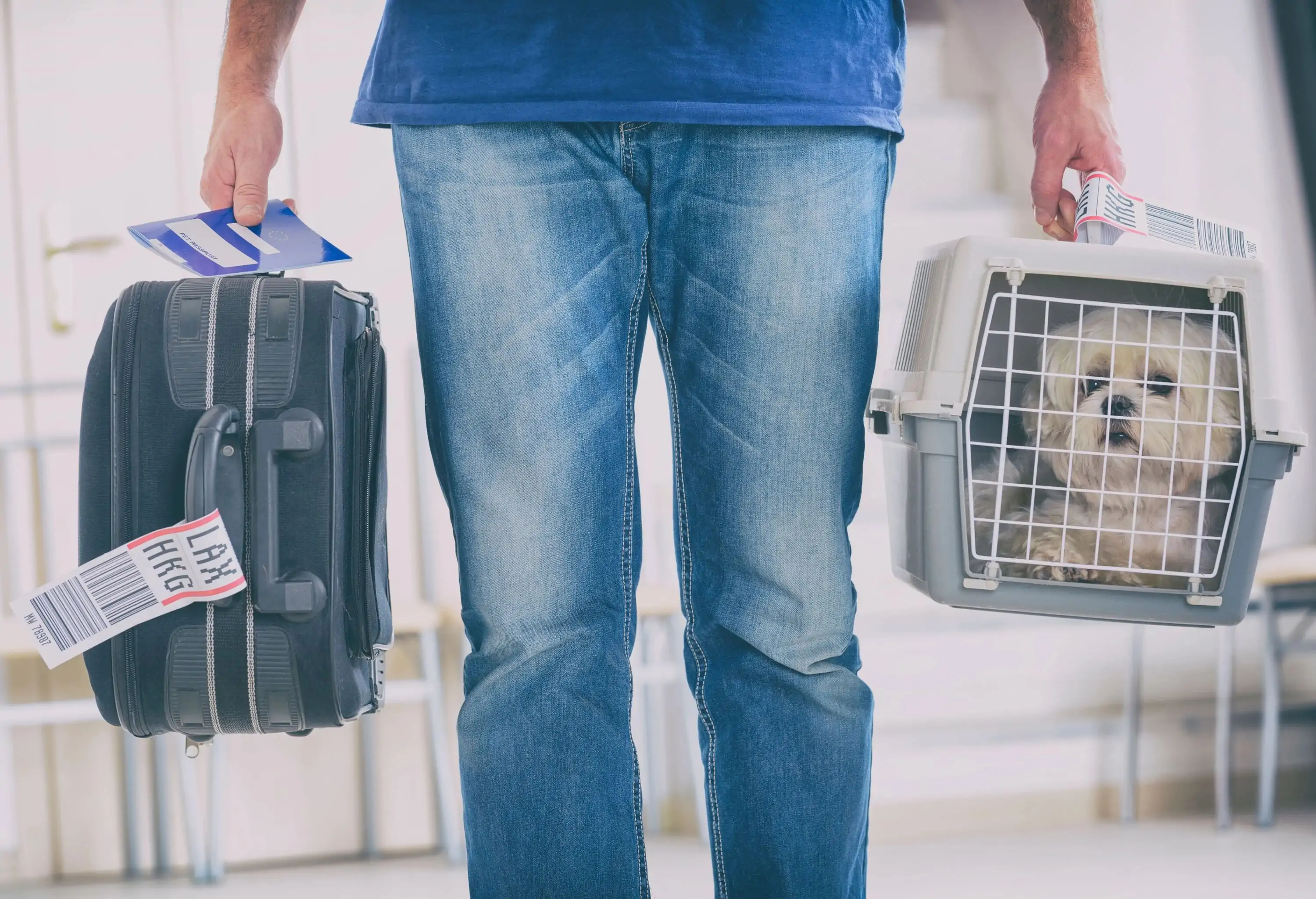
Service dogs such as guide dogs and medical alert dogs, are legally protected under the UK Equality Act 2010, and the ADA in the US, which allows them to fly in-cabin for free as long as they meet behaviour and documentation requirements.
Therapy dogs, such as Buddy Dogs, which provide comfort in places like hospitals and schools, don’t have the same legal protections and must travel under regular pet policies, with owners paying fees and using a crate. This will most likely mean that the dog has to travel in the hold, depending on the size of the dog.
Emotional Support Animals (ESAs) lost their legal airline protections in 2021, meaning they are now treated as pets. Some airlines may choose to accept them though so check in advance.
Tips to help you fly with a service dog
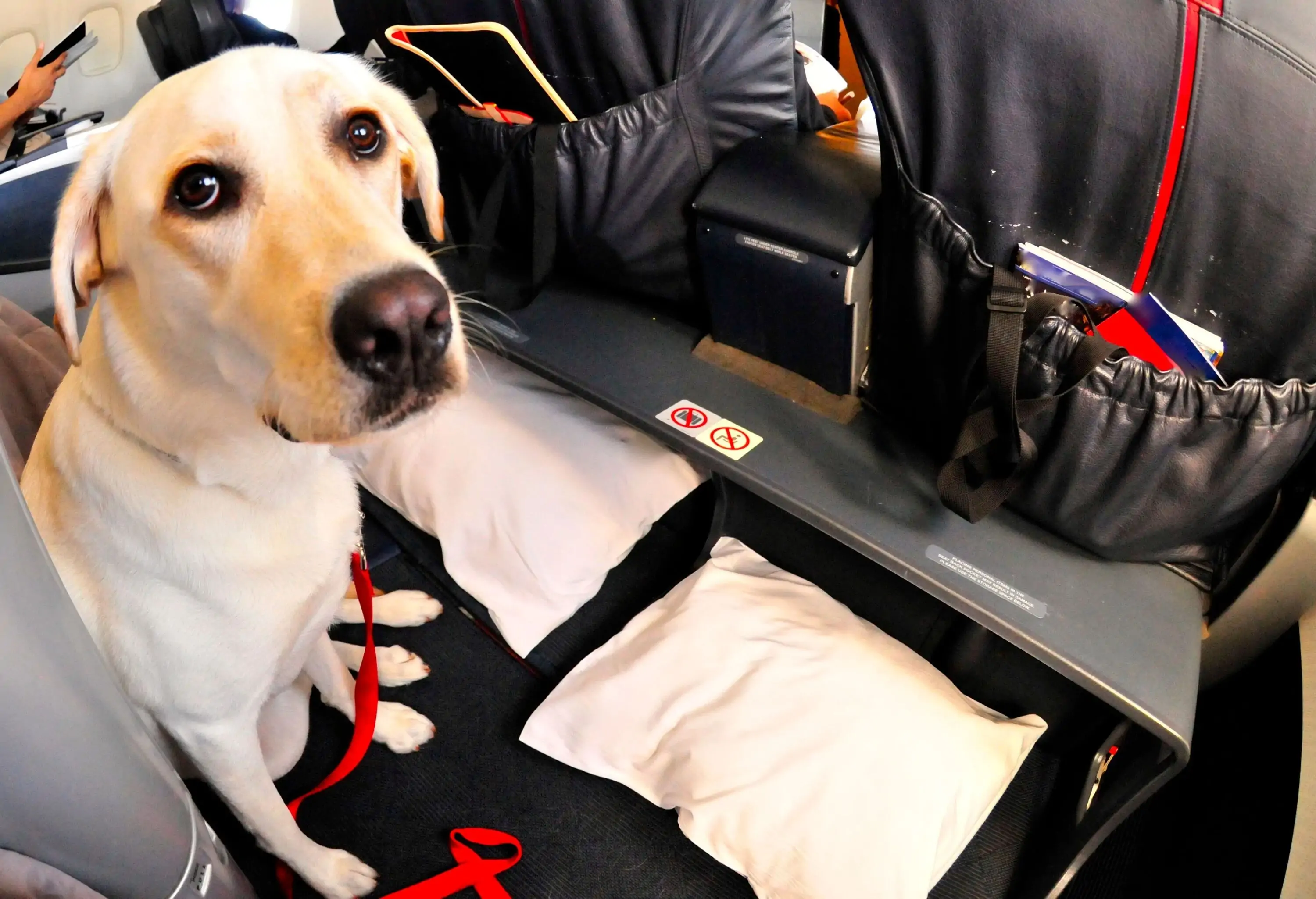
Anticipate food needs
You may want to consider not feeding your dog the morning of flying so they don’t have to go to the toilet as often. Guide Dogs UK states in this dedicated article about travelling with service dogs: ‘If your dog is taking a long haul flight, food can be withheld for up to 24 hours if necessary’. Miss Molly gets a big feast when she lands.
I always pack Lily’s Kitchen vegetarian canned food in my checked luggage as some countries have strict restrictions on meat products, so check before flying. If necessary, arrange to buy dog food at your destination.
Take it slow: set up a training flight
The tarmac outside the plane is noisy and can be stressful for dogs. Training flights can help build their confidence. My instructor took Molly and me on a short Luton to Edinburgh flight to assess her comfort with flying before we attempted longer journeys.
Ask for water or ice cubes
Ask your cabin staff for water. They’re usually very accommodating, I always give them Molly’s pop-up water bowl to fill. You could also request ice cubes if you’re worried about spillages.
Get your paperwork stamped
When you land at any airport, make sure to go through the ‘goods to declare’ line so they can check and stamp your paperwork. They always look at Miss Molly’s AHC here. It’s really useful as the form is translated into loads of different languages.
Learn the phrase ‘Service Dog’ or ‘Guide Dog’ in the local language. It’s really useful.
Can an airline refuse a service dog?
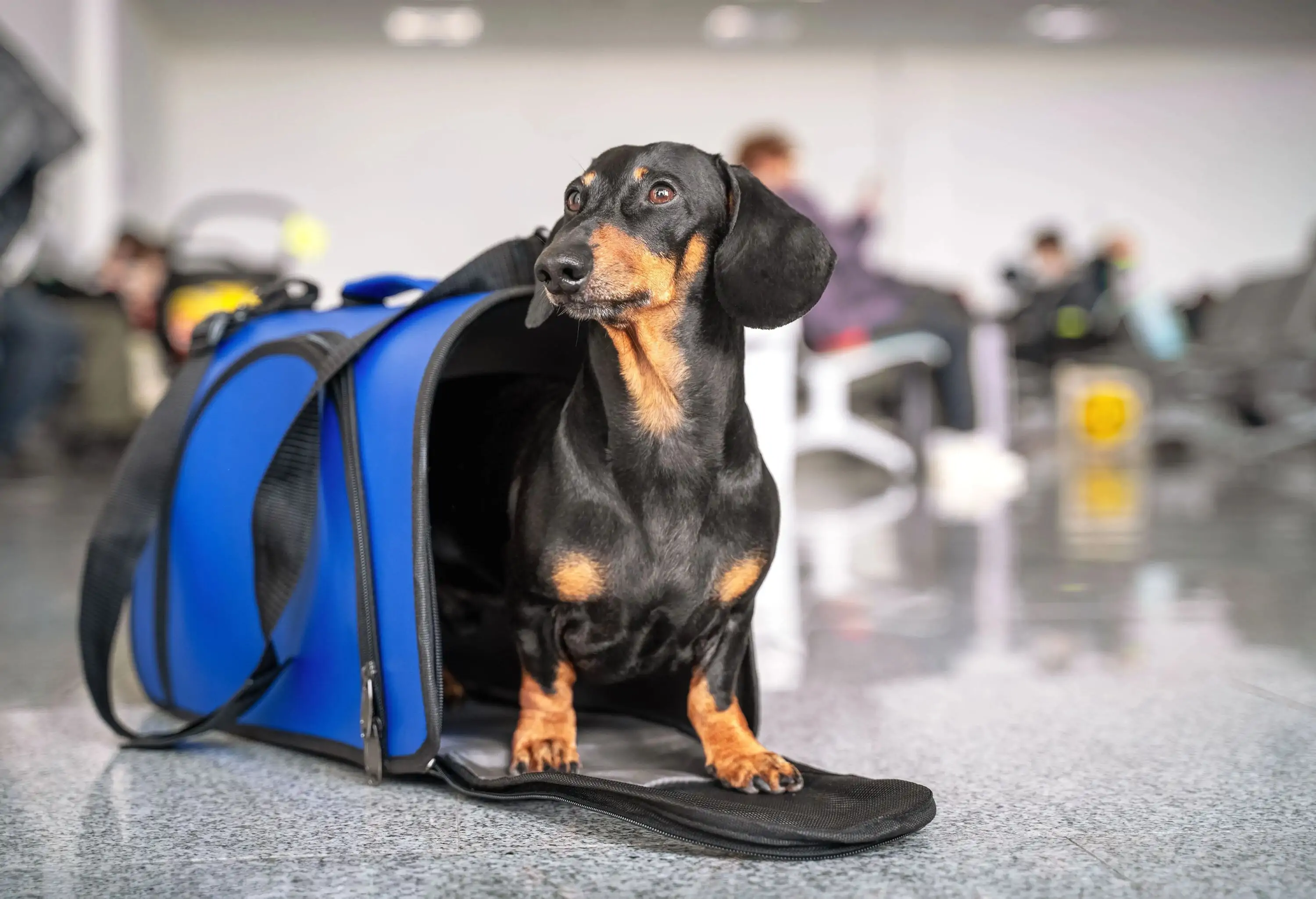
In the UK and Europe, airlines must allow service dogs to fly in the cabin. However, they can refuse if:
- They’re not from a recognised training organisation such as a registered IGDF or ADI school. If you need evidence of this you can call Guide Line for Guide Dogs (0800 7811444) in the UK or ask your assistance dog school.
- You don’t provide the required documentation.
- The dog is aggressive or disruptive.
- The airline operates in a country that doesn’t permit service dogs in the cabin (e.g., some Middle Eastern carriers).
What is the best airline to fly with a service dog?
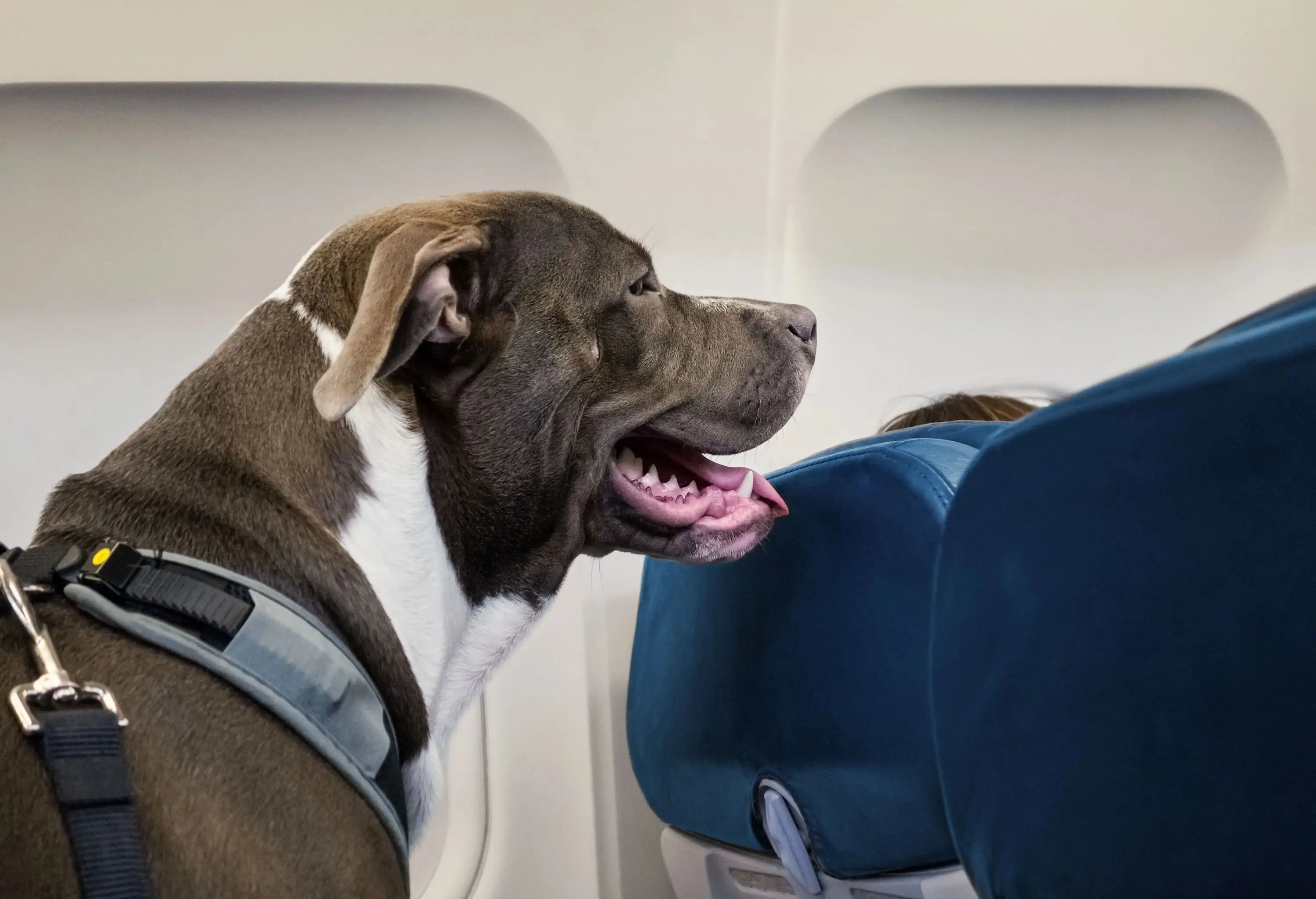
Here is a breakdown of the main UK airlines and their policies so you can decide for yourself. As a rule, all airlines on this list carry service dogs that are accredited by IGDF or ADI only. However other organisations with comparable training standards may be considered. Emotional Support Animals and pets are forbidden.
easyJet
Guide Dogs UK and easyJet teamed up to write the original policies for service dogs on aircraft in the UK. It allows service dogs on most routes apart from flights to/from Egypt, Israel, Kosovo, Montenegro, Morocco and Turkey due to local customs regulations. More information on easyJet’s special assistance policy page.
Jet2
On all flights where national rules permit, they can carry registered assistance dogs when accompanying customers require them. More information on Jet2’s website.
TUI Airways
Service dogs and their required amount of food are carried free of charge. More details and requirements can be found on TUI Airways’s website.
Virgin Atlantic
You need to give a 72 hours’ notice before a flight and fill out the assistance dog form on their website.
The post Flying with a service dog: your complete guide appeared first on KAYAK Blog UK.


